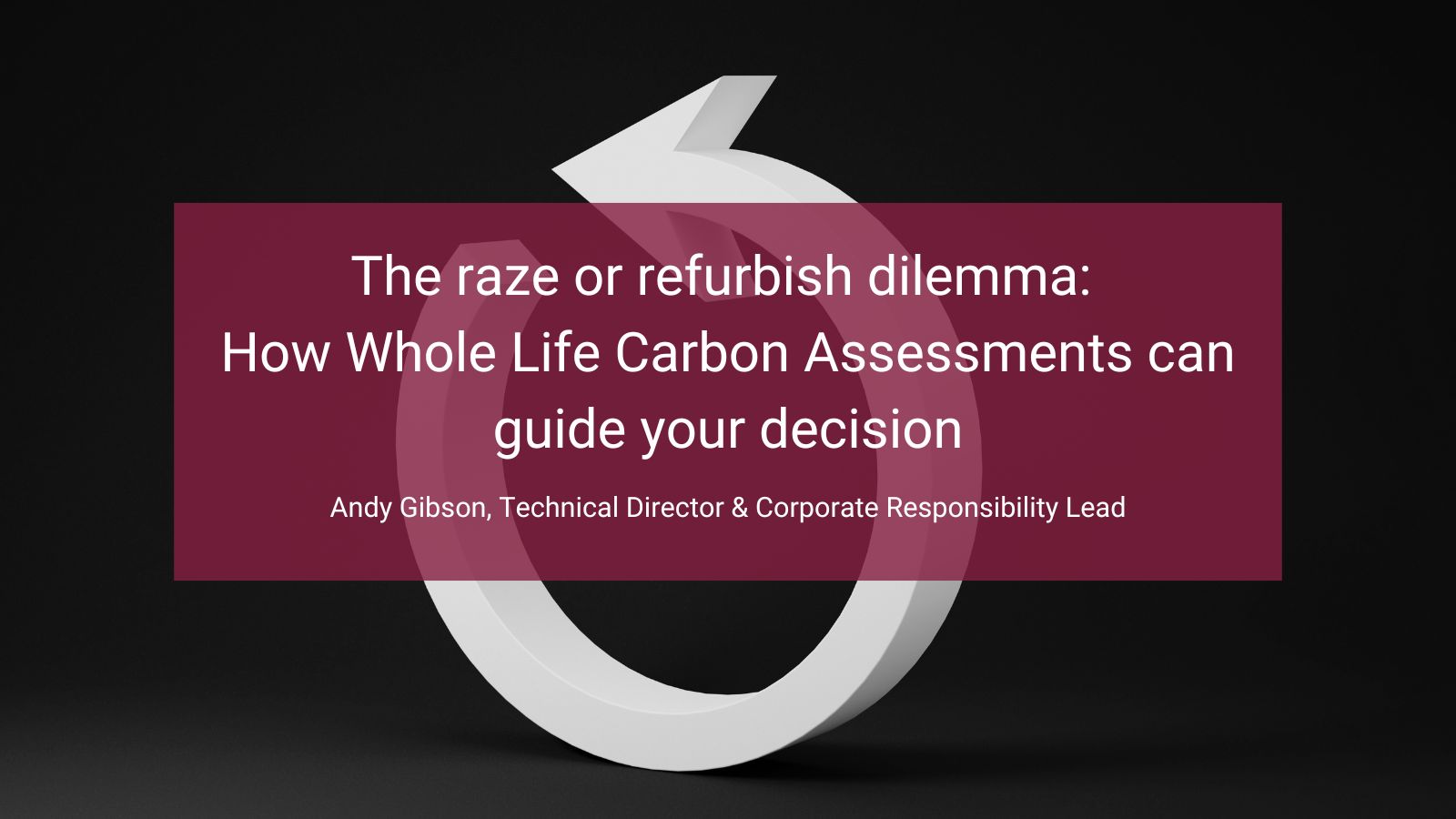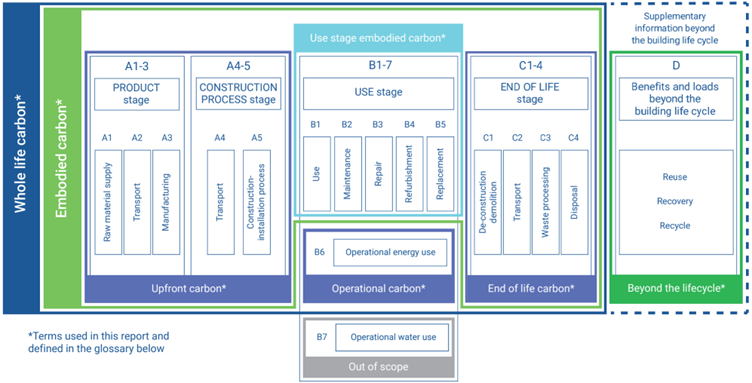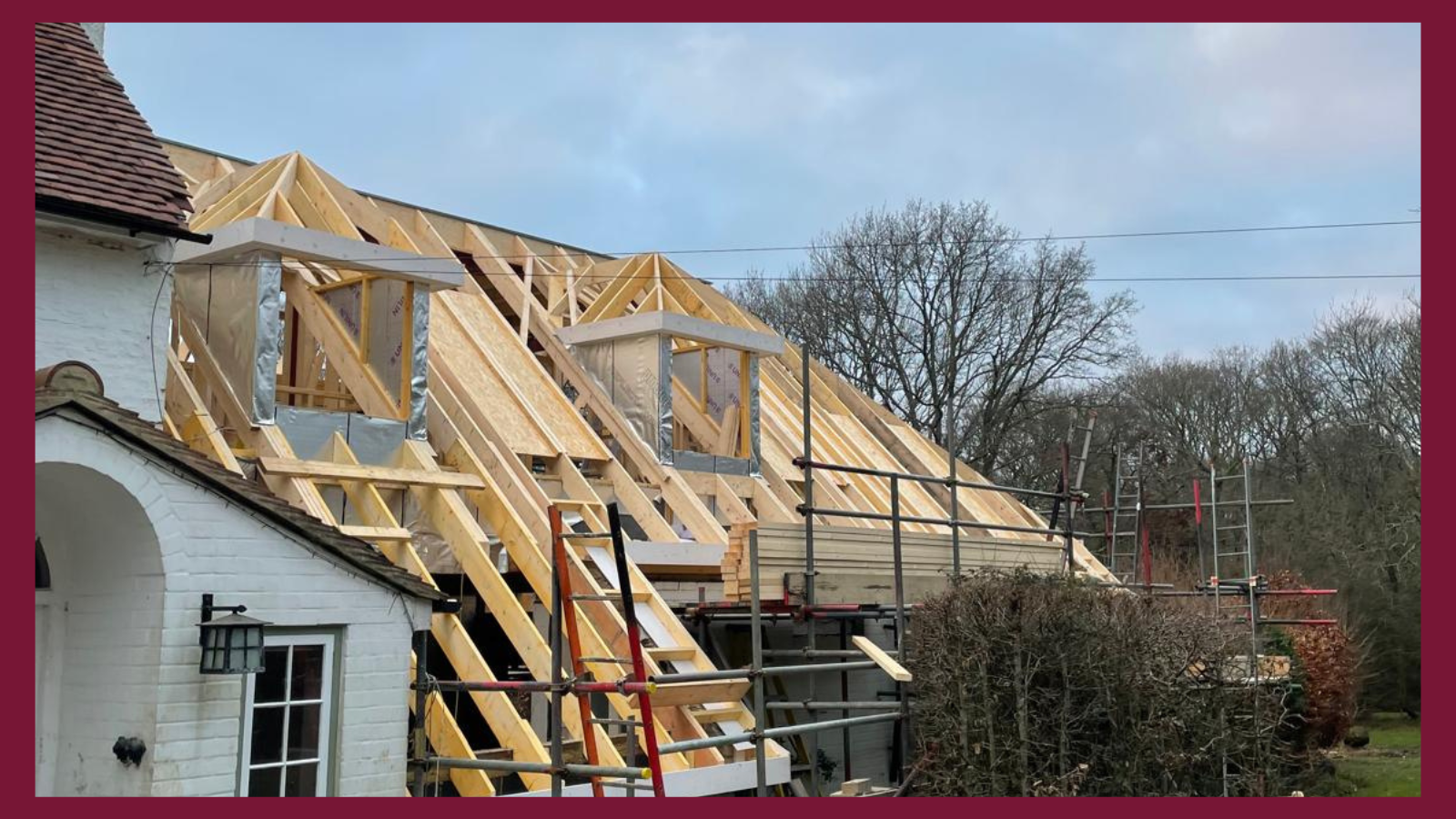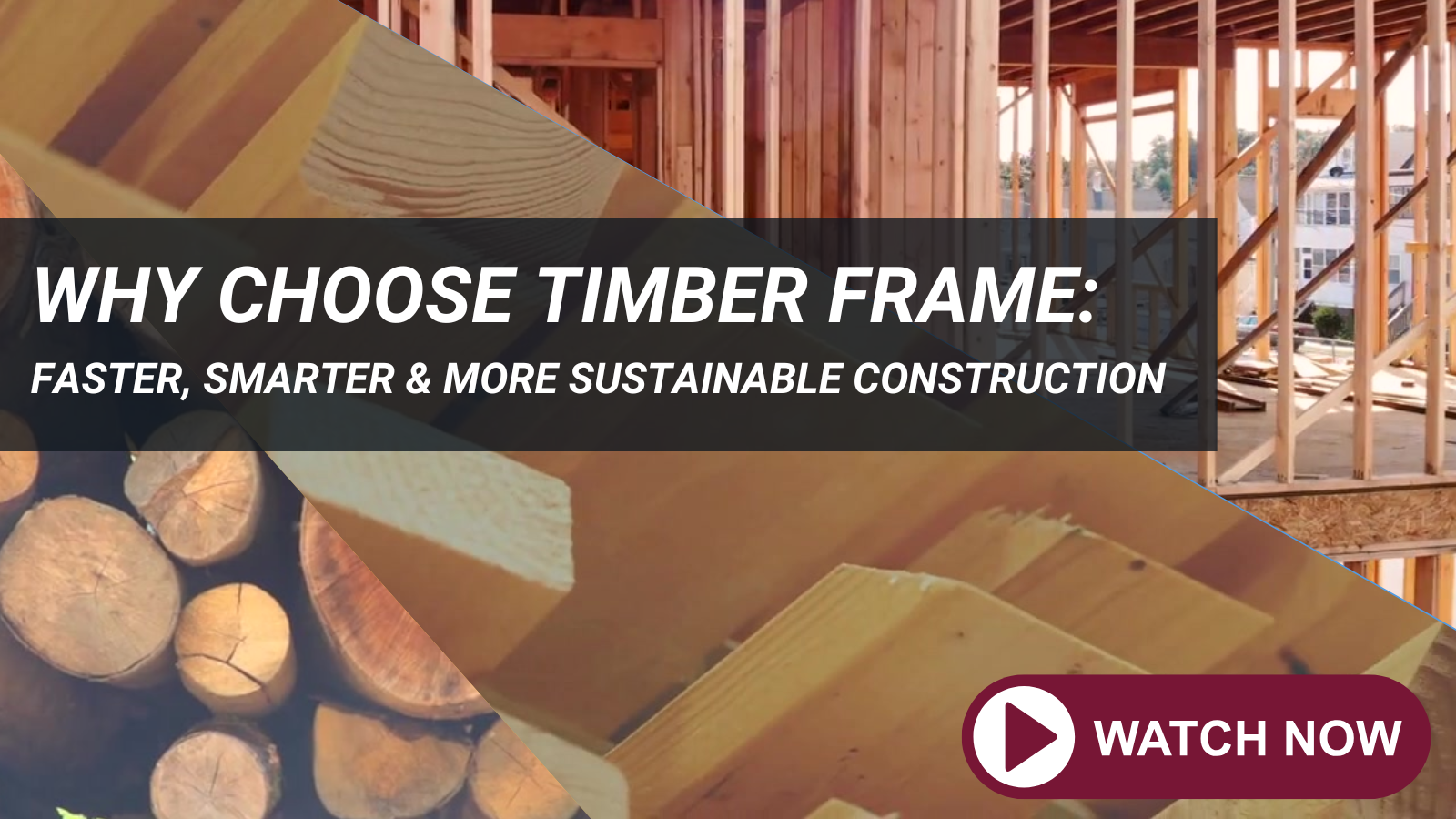The raze or refurbish dilemma: How Whole Life Carbon Assessments can guide your decision

Earlier in the year, Marks & Spencer won a legal battle against the government to demolish and rebuild one of its flagship stores in central London; the government had advocated for refurbishing the existing structure instead.
This news story has brought into the spotlight a debate in our industry: in our climate-conscious world, how should businesses approach ageing buildings that are no longer fit for purpose? Should they raze or refurbish?
In this article, Andy Gibson, Technical Director and Corporate Responsibility Lead at Merronbrook, explains how the use of Whole Life Carbon (WLC) assessments – an often-overlooked measurement – can provide an objective viewpoint on this tricky decision, based on long-term value judgements.
The raze vs. refurbish debate
As the UK moves towards becoming a net zero emission economy, it is imperative that we address the challenge of replacing or upgrading the vast amount of building stock that falls below net zero standards. But the decision between razing a building or refurbishing it is far from straightforward.
Climate impact must be at the heart of these decisions; of course, the state of an existing structure and business considerations like cost and long-term value are vital factors too in the decision-making process.
To raze
On one side of the debate, demolishing a building and constructing a new one can be an opportunity to incorporate modern, energy-efficient technologies to improve operational efficiency and incorporate sustainable materials into the new construction. However, this approach comes with its own carbon costs, including the emissions from demolition, the energy consumed for its deconstruction, as well as the removal, processing, and disposal of waste materials. Additionally, constructing a new building to replace the old one involves the use of fresh materials and energy and the embodied carbon associated with this needs to be considered.
Furthermore, the potential for future operational carbon savings will diminish as the grid continues to decarbonise and heating and cooling systems shift towards electrification. The carbon impact of fabric-enhancing components, such as windows and insulation, remains insufficiently understood, posing challenges for fully optimising a building’s overall carbon performance.
To refurbish
On the other hand, refurbishing an existing building often involves lower immediate carbon emissions compared to demolition and new construction. By retaining and upgrading the existing structure, businesses and householders can preserve the embodied carbon already invested in the building and reduce waste.
Like new builds, refurbishment can also include material energy efficiency improvements and technologies that lower operational carbon emissions over time, and these additions can extend the lifespan of the building. However, the extent to which a refurbishment can achieve energy efficiency improvements also depends on the existing building’s condition and the scope of the renovation.
Demolish or refurbish? How data can guide decision making
Whether choosing to raze or refurbish, the insights gained from Whole Life Carbon (WLC) assessments can guide building operators towards more responsible and environmentally conscious outcomes.
The role of Whole Life Carbon Assessments
WLC assessments provide a framework for evaluating the carbon impact of both demolition and refurbishment. Using WLC assessments allows businesses to weigh the immediate carbon costs of demolition and reconstruction, against the potential benefits of a new, energy-efficient building, while also considering the environmental impact of refurbishing an existing structure.
These assessments consider the carbon emissions associated with all stages of a building’s lifecycle, including embodied carbon, operational carbon, and end-of-life carbon.

Source: World GBC
WLC assessments allow us to make long-term value judgements about the right or wrong of each option based on objective, fact-based reports. Without these assessments, we risk making decisions based on personal bias rather than data.
Industry resources can help you make informed decisions
It is important for the UK construction industry to fully embrace WLC assessments. This includes the codification of their use into standards and the widespread adoption of these assessments across the industry. There is progress in this area but much more needs to be done to unlock the full benefits of WLC as a tool for raze vs refurbish decision-making.
The Structural Timber Association (STA) is actively involved in the Future Homes Hub, where a WLC tool is expected to be launched. The STA is also working towards getting several panel types assessed for Environmental Product Declarations (EPD) and/or WLC analysis, although these assessments will take some time.
In the meantime, we recommend using the Timber Development (UK TDUK)’s Embodied Carbon Data for Timber Products for insights, which provides embodied carbon data for a number of common timber products, and outlines the methodology used to calculate them.
The role of timber in delivering more sustainable construction projects
For existing timber buildings, refurbishment often emerges as a more sustainable option due to the preservation of sequestered carbon, reduced waste, and the opportunities to upgrade existing structures with energy efficient enhancements. However, if there are severe structural issues, razing may be necessary.
One exciting development tied to the refurbishment of existing buildings is the use of lightweight timber structures to revitalise older buildings. A great example of this is the “Optoppen” – or topping up – concept, developed by the team at Whitby Wood, including Director Kelly Harrison. The concept is about adding additional storeys and extra space to older buildings using timber frame and other bio-materials.
The lightweight nature of timber makes it an ideal material for adding new storeys to existing masonry or reinforced concrete structures, whether they’re newly built or much older. We’ve had experience at Merronbrook of adding timber frame storeys to both types of structures, and it is clear that timber frame presents a practical, sustainable, and cost-effective solution for refurbishing and extending buildings. You can learn more about the “Optoppen” work by Whitby Wood here.
Helping you get to grips with embodied carbon
We have put together a quick guide to embodied carbon and the role of timber in reducing it, alongside how Merronbrook can support efforts to lower the environmental impact of construction projects. Click here: Embodied Carbon in Construction: How Timber Can Lead the Way
If you are interested in learning more about timber in construction or want to discuss a specific project – get in touch. Contact us on 01252 844747 or webenquiries@merronbrook.co.uk


